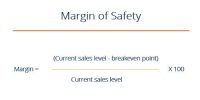Segment margin: The difference between the revenue of a segment and the direct costs of the segment represents the amount of income that has been earned by the particular segment. It is the amount of net profit or net loss generated by a portion of a business. A segment margin is a part of the activity of an organization about which managers would like cost, revenue, or profit data. It can be useful for determining the vulnerability of a company’s overall gross margins. Examples of the segments of a business are: Individual store locations, A product line, A sales territory, A subsidiary etc.
Use the following formula to calculate segment margin:
SM = Segment Revenues – Variable Costs – Avoidable Fixed Costs
What are the six steps in designing accounting based performance measure –
Segment Margin is designed accounting based performance measure: The steps are as follows Identify and define activities and activity cost pools.
- Wherever possible, directly trace costs to activities and cost objectives.
- Assign costs to activity cost pools.
- Calculate activity rates.
- Assign costs to costs objectives using the activity rates and activity measures.
- Prepare management reports.














